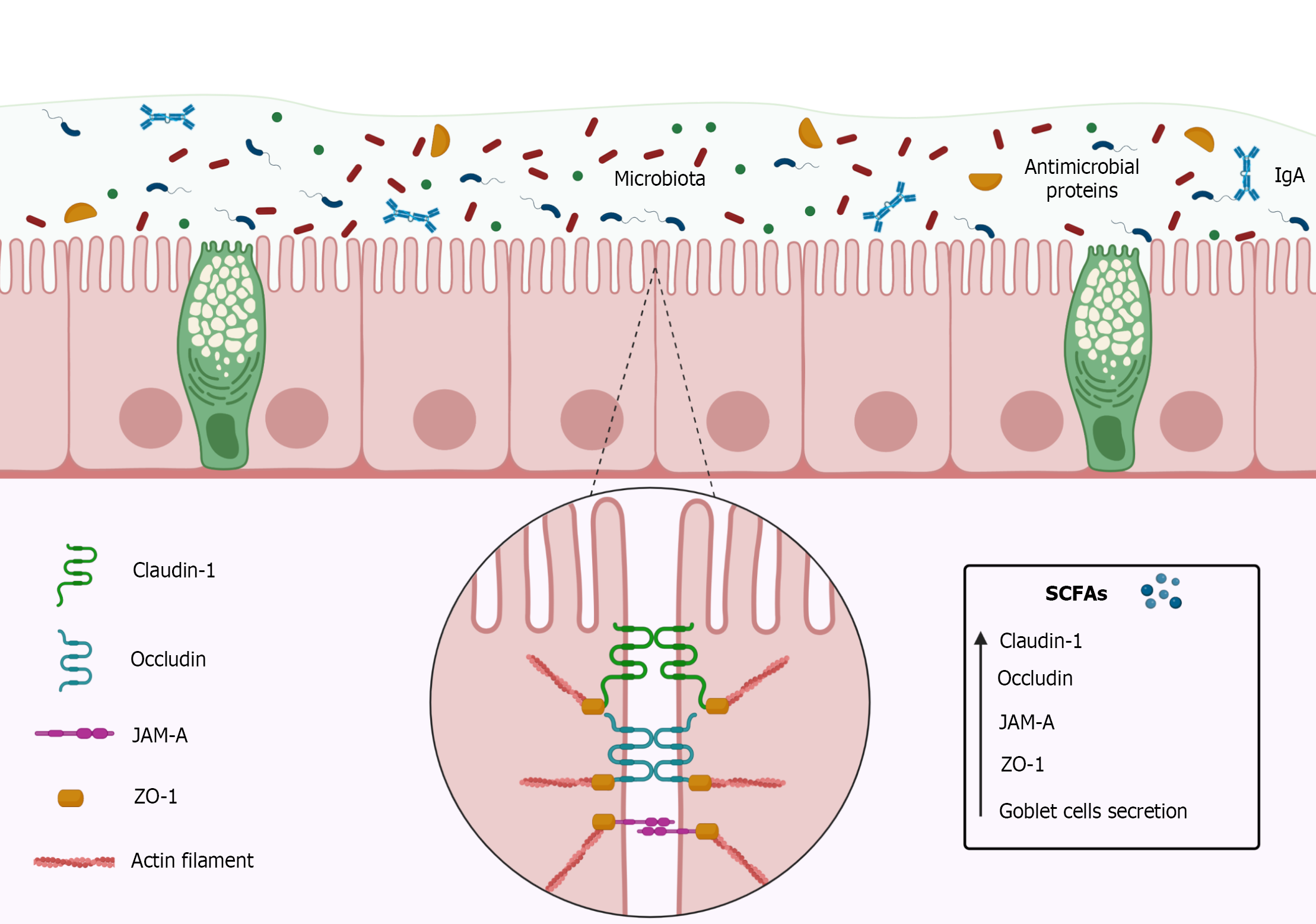Copyright
©The Author(s) 2022.
World J Clin Cases. Oct 6, 2022; 10(28): 9985-10003
Published online Oct 6, 2022. doi: 10.12998/wjcc.v10.i28.9985
Published online Oct 6, 2022. doi: 10.12998/wjcc.v10.i28.9985
Figure 3 Intestinal barrier constitution and short-chain fatty acids effects.
The intestinal barrier is composed by simple cylindrical epithelial cells, mucus, microbiota, immunoglobulins A (IgA), antimicrobial proteins, and intercellular binding proteins such as tight junction proteins. Tight junctions play an important role in the integrity of the intestinal barrier by keeping epithelial cells well adhered to each other, and are composed of transmembrane proteins such as Claudins, Occludin, Junctional adhesion molecules (JAM), and accessory cytoplasmic proteins such as Zonulas Occludens (ZOs). Claudin-1 pairs with other Claudin-1 Loops of the adjacent cell, decreasing paracellular permeability. Like Claudin-1, Occludin pairs with other Occludin loops of the adjacent cell forming a barrier mainly to macromolecules. JAM-A belongs to immunoglobulins superfamily and can form homophilic interactions adjacent to tight junctions and interacting with integrins or other members of the JAM family. ZO-1 are located on the cytoplasm and perform the anchorage of proteins joining them to the cytoskeleton through actin filaments. Short-chain fatty acids (SCFAs), mainly Butyrate, are capable of increase Claudin-1, Occludin, JAM, ZO proteins and increase mucus secretion by goblet cells. The authors have obtained the permission for figure using from the BioRender.com (Supplementary material).
- Citation: Caetano MAF, Castelucci P. Role of short chain fatty acids in gut health and possible therapeutic approaches in inflammatory bowel diseases. World J Clin Cases 2022; 10(28): 9985-10003
- URL: https://www.wjgnet.com/2307-8960/full/v10/i28/9985.htm
- DOI: https://dx.doi.org/10.12998/wjcc.v10.i28.9985









